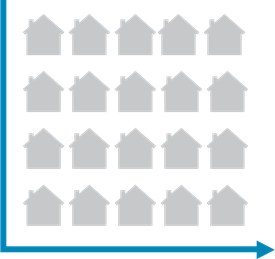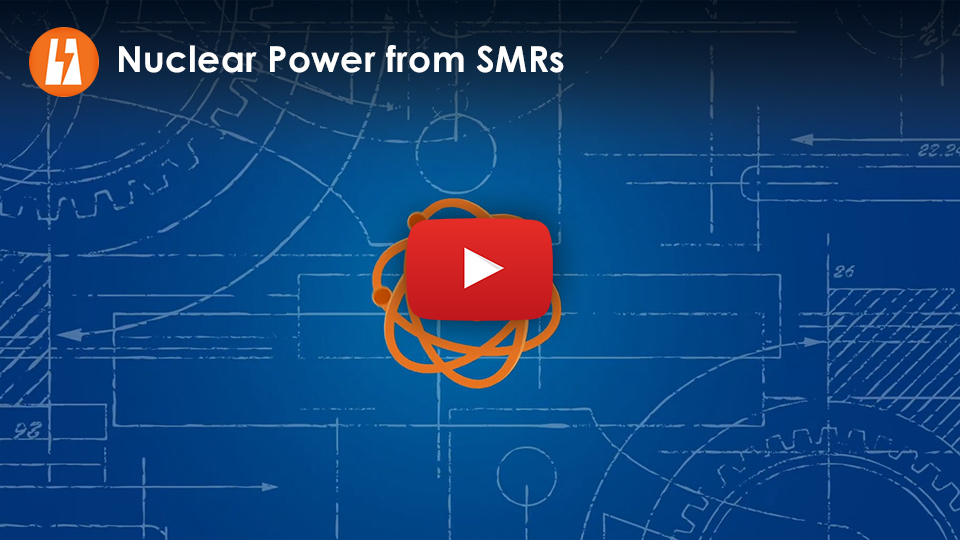
Nuclear power from small modular reactors (SMRs) produces reliable power with zero greenhouse gas (GHGs) emissions. This is a possible generation option for Saskatchewan.
Right now, we don't have any nuclear power in the province. But we're looking into the potential to add it into our supply mix in the mid 2030s.

Nuclear power is made from the heat generated by splitting atoms into 2 or more parts (a process known as fission). Uranium’s often used because its atoms are easier to split apart than other elements. The heat from fission is used to turn water into steam. The steam is then used to spin a turbine and generator to produce electricity.

15% of Canada’s power comes from nuclear generation.
Right now, Saskatchewan mines and exports its large supply of uranium. But it's not used to make power here in Saskatchewan.
SMRs are much smaller than traditional reactors used today. They’re modular, which means they’re built in a factory, brought to the power station site, and assembled. This modular design is one of the reasons SMRs are expected to be less expensive to build than traditional nuclear power projects.
Dependability

Nuclear power can operate 24/7.
Cost

With a costly construction price tag, nuclear energy can be an expensive energy source.
Emissions

Nuclear power produces zero GHG emissions.
Now

In Canada, we might see the first utility scale SMRs used in Ontario by 2028.
We're assessing the business case and strategy for bringing SMRs to our province. As we do this, we're working closely with:
- Ontario Power Generation
- Bruce Power
- New Brunswick Power
- Government of Saskatchewan
- Government of Ontario
- Government of New Brunswick
- Government of Canada
Future

SMRs could fill a gap left by the retirement of our coal-fired power plants and use existing infrastructure to become a reliable baseload source of power. That means they could backup wind and solar generation when those options aren’t available.
Any decisions about nuclear power will involve engagement with:
- the people of Saskatchewan
- First Nations, Métis and Indigenous Rightsholders
- the provincial and federal governments
- regulators
Learn more about how we’re planning for nuclear.
Watch the video below to learn more about Nuclear Power from SMRs.
Working Together
In 2017, we signed a Memorandum of Understanding with Ontario Power Generation. This was to look at the possibility of SMRs as a long-term generation option in both provinces.
In 2018, we took part in a national partnership chaired by Natural Resources Canada (NRCan). Together we helped develop a roadmap to bring SMRs to Canada.
In 2019, a Memorandum of Understanding was signed by the Premiers of Saskatchewan, Ontario and New Brunswick. This committed the 3 provinces to work together to support the use of SMRs in Canada.
In 2020, we signed on to Canada’s SMR Action Plan along with 100+ organizations like:
- provinces
- territories
- municipalities
- industry
- vendors
- academia
- Indigenous organizations
Visit Nuclear Studies to read the SMR Action Plan, the SMR Roadmap and more.


